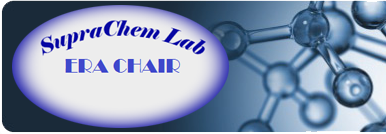|
Group leader:
|
Phd Mihaela Silion (ER chemistry)
|
|
Members:
|
PhD Adina Coroaba (PD physicist); PhD S. Ibanescu (PD chemistry);
R. Zonda (PhD student chemistry)
|
Channels and pores are used in biological systems to transport metabolites across the cell membranes. Thousands of ion-channel architectures have been explored with the hope to mimic the natural ionic conduction. All these systems have produced an impressive collection of alternative artificial systems, facing the world of natural ion-conduction proteins. Amazingly, there has been less progress in the area of synthetic water channels. Despite the tremendous imagination of synthetic chemists to produce sophisticated architectures confining water clusters, most of selected strategies have been related to the use of natural proteins channels as the selectivity filters, embedded in the diverse arrays of bio-assisted artificial systems. These results show that the combination of natural proteins presenting high water conductance states within natural conditions, with artificial lipidic or polymeric matrixes have demonstrated that natural biomolecules can be used as bio-assisting building blocks for the construction of highly selective artificial membranes. Within this context, the next step may be related to increase this enormous potential imagining that natural conduction activity obtained with natural compounds can be bio-mimicked using simpler compounds displaying constitutional functions like the natural ones in order to create totally artificial biomimetic channels by using synthetic approaches. The goal of such studies is directed by natural selection of functions with constitutional selective artificial superstructures for water/proton transport like in the natural ones. Mimicking the complex superstructures of proteins is an important exploring challenge. It is more than meaningful to mimic the key parts of active filters, giving of chemical selectivity, to understand the dynamics of orientating water dipoles and their role for ion/proton pumping along the channel. Moving from complex natural to simpler water-channel systems, we would have the chance to better understand mechanistic and structural behaviors, unlocking the door to novel interactive water-channels, paralleling that of biomolecular systems.
Supervision/trainer
Prof. Joao Crespo IAB
Prof. Achim Muller –Trainer
Dr. Arie van der Lee-Trainer
|



